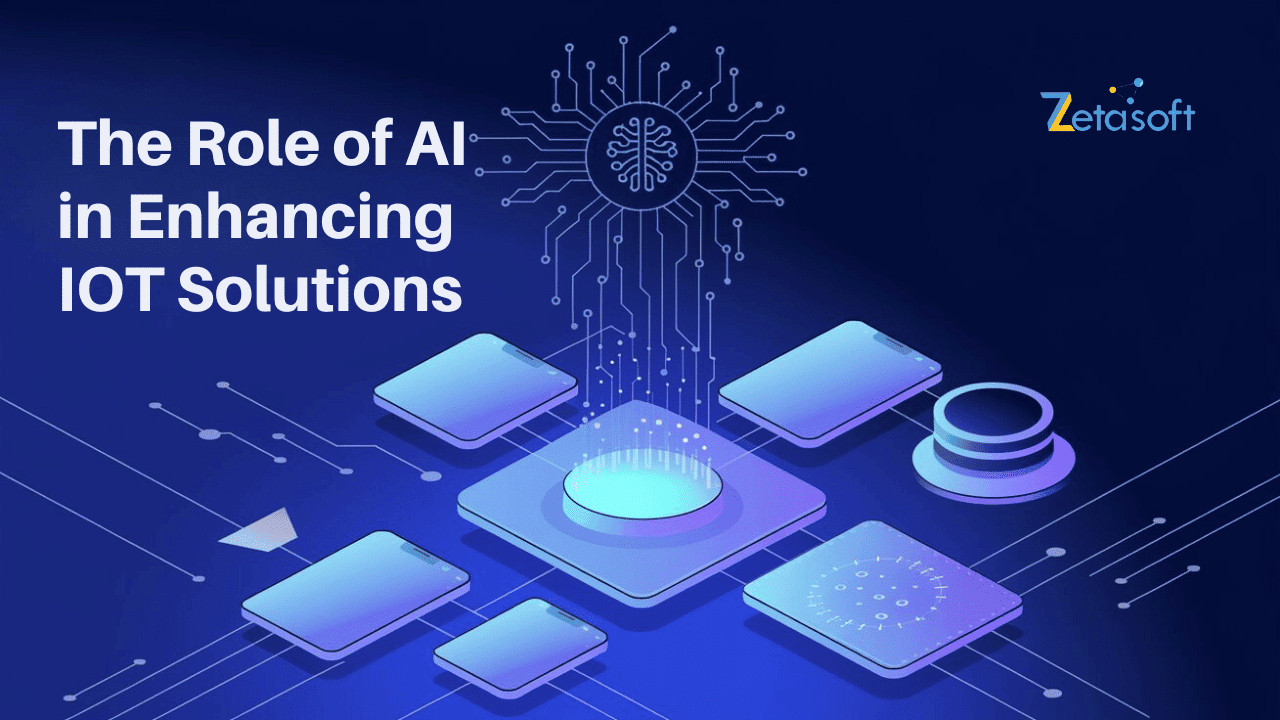IoT trend has revolutionized how people and companies engage with the physical environment through connecting objects that gather, transmit and process information. From homes to factories and offices IoT has brought new opportunities in different fields of operation. However, as the number of connected devices increases in a geometric progression, so does the challenge of ‘moving the data’ and ‘making sense of it’. This is where Artificial Intelligence (AI) comes into play, as it is the only solution that enables real time analysis of the data collected from IoT systems that will help the IoT systems to perform optimally. In this article, we will learn the Role of AI in Enhancing IoT Solutions while making relevant decisions faster, increasing efficiency in managing IoT applications, and opening up new opportunities for more efficient IoT solutions.
Real Time Data Analysis and Decision Making
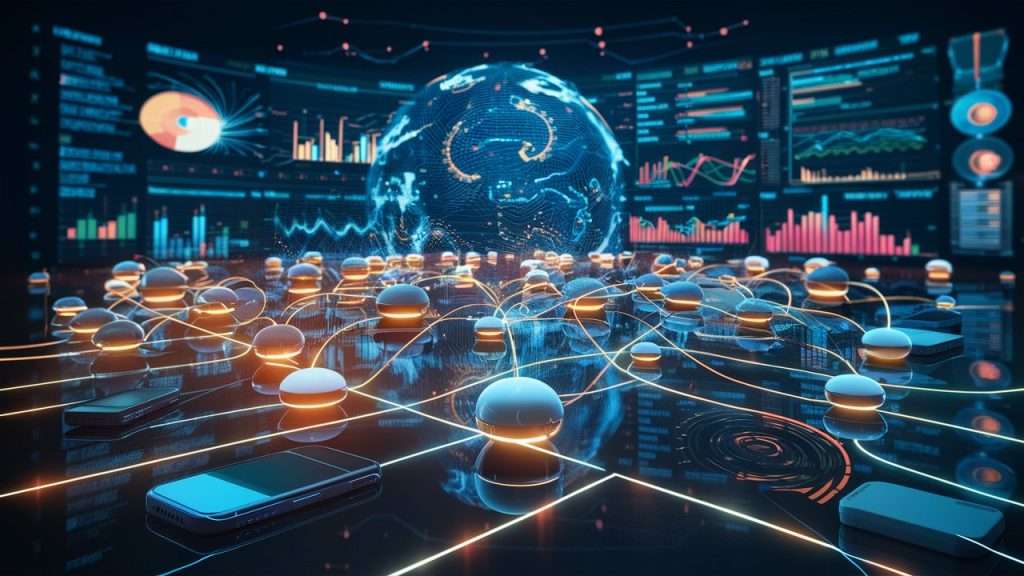
In The Enhancing IoT Solutions, The issues that IoT solutions struggle with include managing the volumes of data collected by the connected devices. AI comes in and intervenes by making use of this information real-time and uncovering better solutions in the shortest time possible. The combination of AI into the IoT systems provides organizations with improved ways in decision making, increased efficiency and reduced response time.
Predictive Analytics
A rising star of IoT is artificial intelligence coupled with the use of predictive analytics. Based on collected big data and data from IoT devices, AI can forecast the future and possible behavior of a specific device. For instance, can be used in industrial Internet of Things applications where it can use sensor data to determine when some equipment is likely going to break down, and then carry out the necessary maintenance before this happens and the equipment development costly problems.
Besides time of downtime, such a predictive capacity helps to increase operational effectiveness as a rule. The predictive analytics can then predict traffic flows, and thus assist in managing traffic in smart cities well to avoid high traffic densities. Through AI, business groups, as well as governments, can avoid some problems or go for preventive actions instead of seeking remedies after the problem has occurred.
Automated Decision-Making
IoT devices generate continuous streams of data, but without AI, it’s difficult to act on that data in real-time. AI algorithms can analyze incoming data from IoT sensors and devices, making decisions autonomously. For instance, in smart homes, AI can adjust heating and lighting systems based on occupancy patterns and user preferences, without the need for manual input.
In agriculture, AI-powered IoT systems can monitor soil moisture and weather conditions, automatically activating irrigation systems when needed, ensuring crops receive the optimal amount of water. This level of automation reduces human intervention and improves resource management.
Anomaly Detection
AI plays a key role in anomaly detection, identifying outliers and potential issues before they become serious problems. By continuously monitoring data from IoT devices, AI algorithms can detect unusual patterns, such as a spike in energy usage or abnormal equipment behavior, signaling that maintenance is required or a security breach may be occurring.
For example, in smart energy grids, AI can detect anomalies in power consumption and automatically reroute energy to prevent blackouts or overloading. This proactive approach allows organizations to address issues before they escalate into larger problems, improving reliability and performance.
Enhancing Efficiency Through AI-Driven IoT Automation
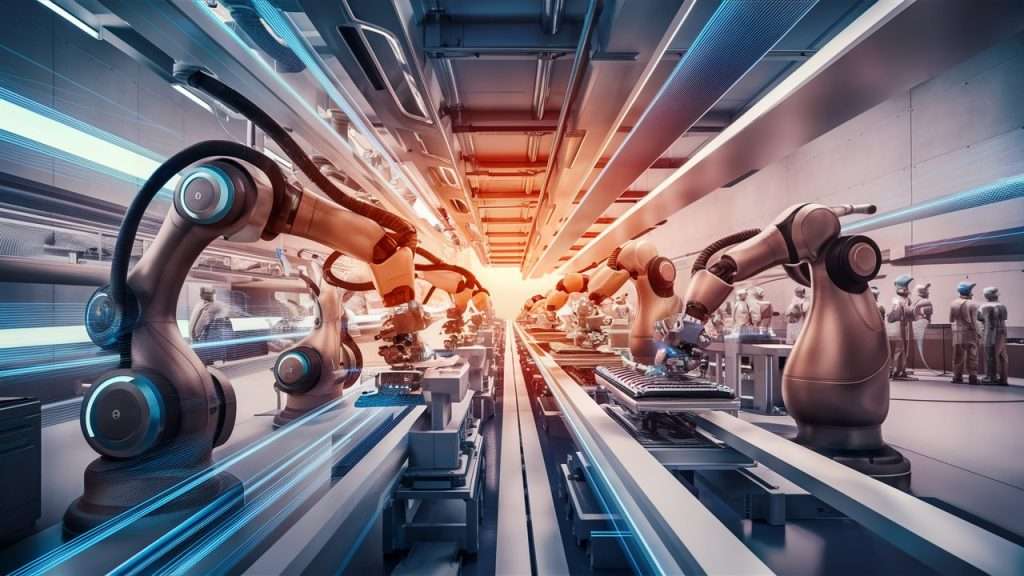
Form The Enhancing IoT Solutions, AI and IoT together can drastically enhance the efficiency of various processes by enabling automation that reduces human intervention and improves the performance of systems. From manufacturing to logistics, AI-powered IoT automation helps streamline operations, cut costs, and increase productivity.
Smart Manufacturing and Industry 4.0
In manufacturing, the combination of AI and IoT is at the heart of Industry 4.0, the next phase of industrial automation. AI-powered IoT systems monitor factory operations in real-time, optimizing production schedules, managing supply chains, and predicting equipment failures. For example, robots equipped with IoT sensors and AI algorithms can work autonomously, adjusting their actions based on real-time data, ensuring higher precision and consistency in manufacturing processes.
AI can also optimize workflows by analyzing production data to identify inefficiencies and suggest improvements. By reducing machine downtime and optimizing resource usage, manufacturers can boost productivity and lower operational costs.
Autonomous Systems and Robotics
Autonomous systems powered by AI and IoT are transforming industries like logistics, agriculture, and healthcare. In warehouses, AI-driven robots use IoT data to navigate environments, pick items, and manage inventories autonomously. AI enhances their ability to make real-time decisions based on changing conditions, such as adjusting paths when obstacles are detected.
In agriculture, autonomous drones and robots monitor crops and deliver pesticides or fertilizers only where needed, reducing waste and improving yields. These systems continuously learn from IoT data, improving their efficiency over time without requiring human supervision.
Smart Energy Management
AI can greatly enhance smart energy management systems powered by IoT, optimizing energy consumption in real-time. Smart grids, for instance, rely on AI algorithms to balance supply and demand, monitor energy usage, and reduce waste. By integrating renewable energy sources like solar and wind, AI can optimize energy distribution and reduce reliance on traditional power plants.
In commercial buildings, AI-powered IoT systems can automatically adjust lighting, heating, and cooling based on occupancy patterns, improving energy efficiency and reducing utility costs. This real-time automation ensures that energy is used only when and where it’s needed, reducing environmental impact.
Personalization and User Experience in IoT
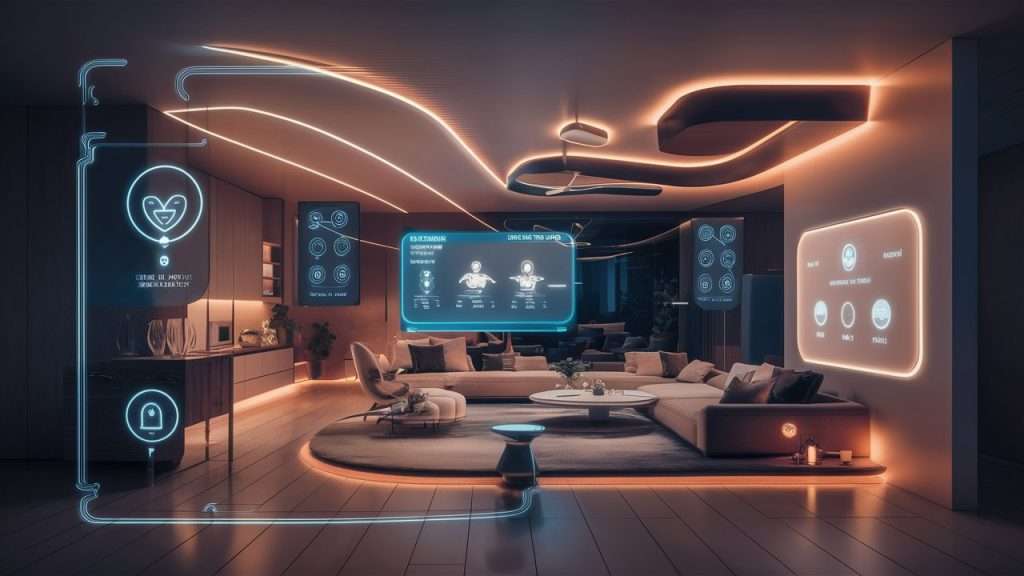
Enhancing IoT Solutions Includes Like, AI enhances IoT solutions by offering personalized experiences based on user preferences, behavior, and context. This level of personalization creates more intuitive and responsive systems, improving the overall user experience in both consumer and enterprise environments.
Smart Homes
In smart home ecosystems, AI analyzes data from IoT devices like thermostats, lighting systems, and security cameras to create personalized environments tailored to individual user preferences. AI-powered virtual assistants, such as Amazon’s Alexa or Google Assistant, learn user behaviors over time, adjusting settings and automating tasks to meet the needs of the occupants.
For example, AI can analyze when users typically leave for work and return home, adjusting thermostats, lights, and security systems accordingly. As AI systems learn user preferences, they create an increasingly seamless and personalized experience.
Personalized Healthcare
In healthcare, AI-powered IoT devices, such as wearable fitness trackers and medical sensors, provide personalized health insights based on real-time data. AI can analyze heart rate, sleep patterns, and activity levels to offer tailored recommendations for improving health and wellness.
For patients with chronic conditions, AI-driven IoT devices can continuously monitor vital signs and alert healthcare providers if abnormalities are detected, enabling timely interventions. This personalized approach to healthcare improves patient outcomes and reduces the burden on medical professionals.
Context-Aware Services
AI in IoT enables context-aware services that adapt based on the user’s location, time, or activity. In retail, for example, AI-powered IoT systems can analyze customer behavior in-store and deliver personalized promotions or recommendations in real-time. If a customer lingers near a specific product, the system can send a discount notification to their smartphone.
In transportation, AI can analyze traffic patterns and adjust navigation routes based on real-time conditions, providing users with a more efficient travel experience. This context-driven personalization makes IoT systems more responsive to the needs of users, improving satisfaction and engagement.
AI-Driven Security for IoT
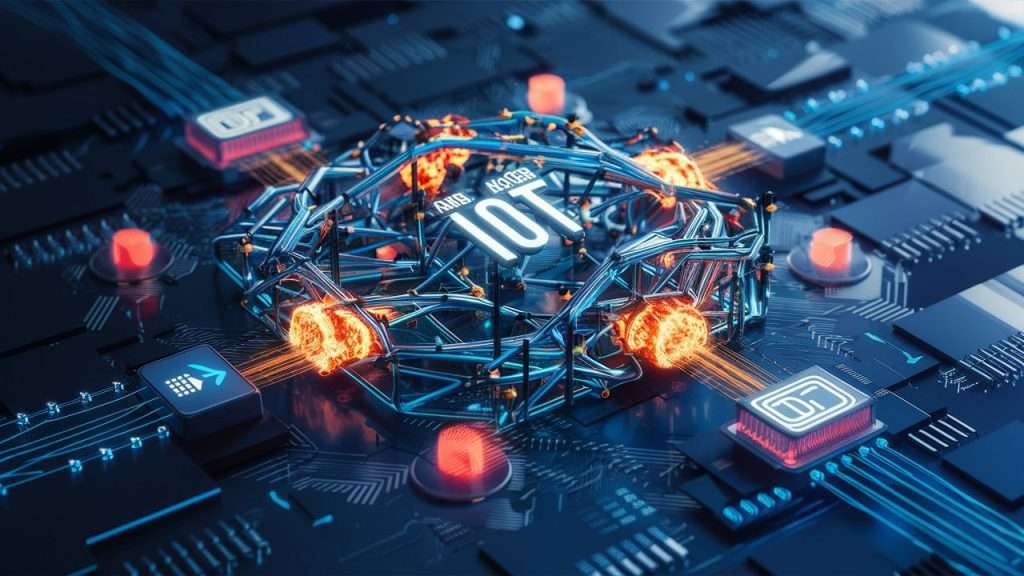
In The Enhancing IoT Solutions, Security is one of the biggest concerns in IoT ecosystems, as connected devices are often vulnerable to cyberattacks and data breaches. AI plays a crucial role in enhancing the security of IoT systems by detecting threats in real-time and automating responses to mitigate potential risks.
Threat Detection and Prevention
AI enhances IoT security through real-time threat detection. By continuously monitoring data from connected devices, AI-powered systems can detect suspicious activities or anomalies that may indicate a security breach. For example, an AI system monitoring a network of IoT-enabled smart locks can detect abnormal access attempts and trigger security protocols to prevent unauthorized entry. By analyzing patterns and behaviors across the network, AI can identify emerging threats and automatically implement security measures to mitigate them before they cause damage.
Adaptive Security Measures
Unlike traditional security systems that rely on predefined rules, AI-driven IoT security systems are adaptive. AI continuously learns from new data and adjusts security protocols to stay ahead of evolving threats. As hackers develop new attack methods, AI can identify these tactics and develop countermeasures without needing human intervention.
This adaptability is especially important in IoT environments where devices may not have the processing power to run complex security software. AI can take on the task of continuously monitoring and securing the network, ensuring that even low-power IoT devices are protected.
Data Privacy
Data privacy is a major concern with IoT devices that collect vast amounts of personal information. AI can enhance data privacy by ensuring that only authorized parties have access to sensitive data. Through advanced encryption methods and machine learning, AI can detect attempts to access private data and block unauthorized users from gaining access.
Moreover, AI can help organizations comply with privacy regulations such as GDPR by managing consent and ensuring that personal data is handled responsibly across IoT networks. This ensures that users’ data remains protected while still enabling the benefits of IoT technology.
Challenges & the Future of AI-Enhanced IoT Solutions
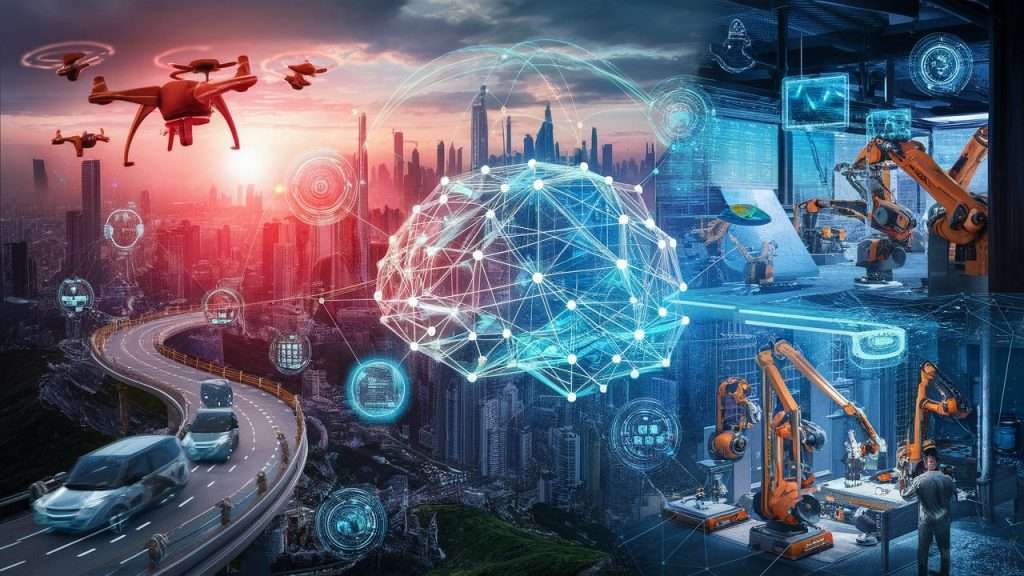
Form The Enhancing IoT Solutions, While AI offers significant benefits to IoT systems, there are also challenges that need to be addressed for widespread adoption and optimal performance.
Scalability
As IoT networks expand, the scalability of AI solutions becomes a key challenge. AI systems need to handle an increasing amount of data from millions of connected devices without slowing down or becoming inefficient. Developing scalable AI algorithms that can process vast amounts of data in real-time is essential for future IoT networks.
Data Security and Ethics
As IoT devices collect more personal and sensitive data, ensuring the ethical use of AI becomes critical. Companies must implement strong data governance practices to protect user privacy and prevent misuse of AI insights. This includes creating transparent AI systems that users can trust, with clear guidelines on how data is collected, used, and shared.
Integration and Interoperability
Many IoT devices are manufactured by different companies and use proprietary protocols, making it difficult to create integrated systems. AI needs to work seamlessly across various IoT platforms to deliver the full benefits of automation and analytics. Improving interoperability between IoT devices and AI platforms is essential for realizing the potential of AI-driven IoT solutions.
Future Innovations
Looking ahead, the integration of AI and IoT will drive further innovations in fields like autonomous vehicles, smart cities, and precision agriculture. With advancements in edge computing, AI can process data directly at the source, reducing latency and enabling faster decision-making in IoT systems. As AI becomes more advanced, IoT networks will become increasingly autonomous, efficient, and capable of handling even the most complex tasks.
Summary
AI is playing an essential role in enhancing IoT solutions by enabling real-time data analysis, automating processes, personalizing experiences, and improving security. As IoT ecosystems continue to grow, the integration of AI will become even more critical in unlocking the full potential of connected devices across industries. From predictive analytics to anomaly detection and personalized services, AI-driven IoT solutions are transforming industries and shaping the future of technology.
While challenges such as scalability and security need to be addressed, the combination of AI and IoT promises to deliver smarter, more efficient, and responsive systems that will improve daily life and business operations in profound ways.

